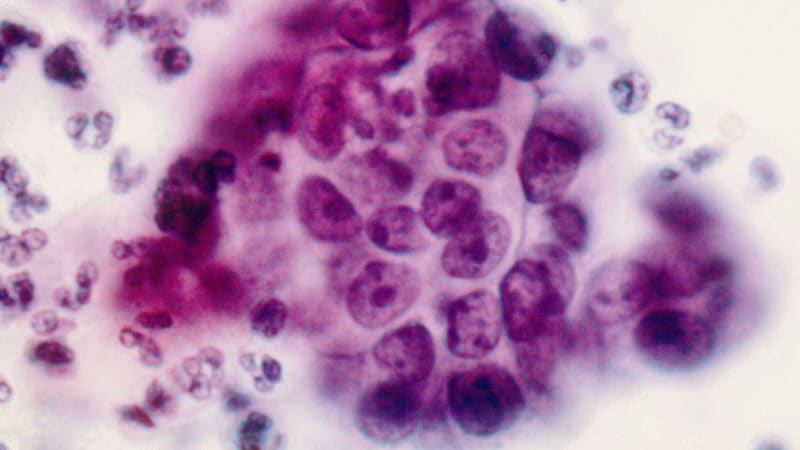High-risk human papillomavirus (HPV) status is the strongest predictor of mortality in invasive cervical cancer as many as 15 years after diagnosis, a Swedish analysis suggests.
The findings, published online January 25 in the Journal of Clinical Oncology, suggest that patients whose tumors are positive for any of the 13 most high-risk HPV types have a 43% lower excess mortality compared to those who are high-risk HPV-negative.
“Women with [invasive cervical cancer] whose tumor is negative for [high-risk] HPV should be considered higher-risk patients for poor clinical outcome,” lead author Jiayao Lei, PhD, and colleagues from the Karolinksa Institute, Stockholm, Sweden, conclude.
Although previous research shows detection of HPV in invasive cervical cancer is strongly associated with prognosis, these studies have not taken sequencing efforts into account. The authors suggest that cervical tumors that test negative for HPV on standard assays may not actually be HPV-negative.
The investigators conducted a comprehensive analysis of cervical cancer tissue in 2845 patients with invasive disease and followed these women from diagnosis until December 2016. After PCR testing, 2456 patients tested positive for HPV. Among those who were HPV-negative, an additional 169 tested positive after undergoing RNA sequencing.
Overall, after PCR or RNA sequencing, the researchers found about 92% of patients were HPV positive for any of the 37 types of HPV, and 8% were HPV negative. Further analysis revealed 88.7% (n = 2524) of cases were positive for any of the 13 most high-oncogenic-risk HPV types and about 11.3% (n = 321) were negative.
Compared with the general female population, the 5-year cumulative relative survival ratio was 0.45 among high-risk HPV-negative patients and 0.74 among HPV-positive patients 15 years after diagnosis, after adjusting for age, time since diagnosis, stage, histology, and education level.
These ratios translate to a 43% lower excess mortality in the high-risk HPV-positive group (excess hazard ratio, 0.57).
Comparing HPV types, HPV18-positive cases were associated with a 55% greater excess mortality compared with HPV16-positive cases.
“We demonstrate a substantially better prognosis in women with [invasive cervical cancer] who have an infection with the most oncogenic HPV types in their tumor,” the authors conclude. “The effect size of the association between HPV status and prognosis is so large that it would take a very strong unmeasured confounder to have biased our conclusions.”
The authors also note that future work should focus on explaining “the potential biologic mechanisms behind this finding, and explore how we may best introduce and use hrHPV as a biomarker to guide routine clinical practice.”
This study was supported by the Center for Innovative Medicine, the Clas Groschinsky Memorial Foundation, the Swedish Medical Society, the Swedish Foundation for Strategic Research, and the Karolinska Institute. Lei has disclosed no relevant financial relationships.
J Clin Oncol. Published online January 25, 2022. Abstract
Sharon Worcester is an award-winning medical journalist at MDedge News, part of the Medscape Professional Network.
For more from Medscape Oncology, join us on Twitter and Facebook
Source: Read Full Article
